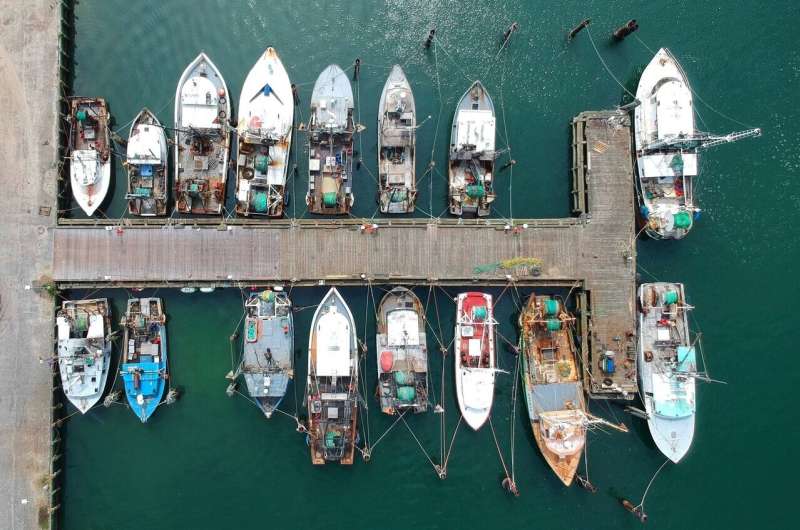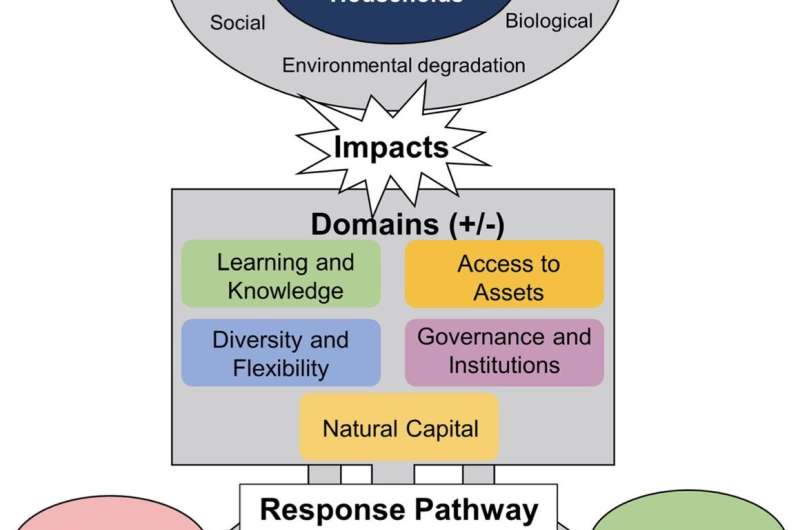Small-scale fisheries offer strategies for resilience in the face of climate change

Coastal communities at the forefront of climate change reveal valuable approaches to foster adaptability and resilience, according to a worldwide analysis of small-scale fisheries by Stanford University researchers.
Globally important for both livelihood and nourishment, small-scale fisheries employ about 90 percent of the world's fishers and provide half the fish for human consumption. Large-scale shocks—like natural disasters, weather fluctuations, oil spills and market collapse—can spell disaster, depending on the fisheries' ability to adapt to change. In an assessment of 22 small-scale fisheries that experienced stressors, researchers revealed that diversity and flexibility are among the most important adaptive capacity factors overall, while access to financial assets was not as important for individual households as it was at the community scale. The research was published Jan. 23 in the journal Climatic Change.
"The idea of assets not being essential at the household level is an empowering finding because we looked at a lot of places in developing nations without a lot of assets," said lead author Kristen Green, a Ph.D. student in the Emmett Interdisciplinary Program in Environment and Resources (E-IPER) at Stanford's School of Earth, Energy & Environmental Sciences (Stanford Earth). "It shows we can invest in non-financial or non-asset-based adaptive mechanisms, and fishers can still adapt."
Focusing on response mechanisms
The researchers measured adaptive capacity using a new framework with three response pathways: adapt, react and cope. Adaptation is defined as proactive planning or taking collective action, reaction as an unplanned response, and coping as passive acceptance of consequences. The team of 11 study authors determined whether or not each fishery community or household had capacity in the areas of knowledge, assets, diversity and flexibility, governance and institutions, and natural capital.
"These adaptive capacity domains don't work in isolation—it's the recipes or combinations that are important for successful adaptation," Green said.
While previous research has calculated a quantitative or numerical resilience score for different regions and sectors, the focus on community response is fairly new, according to senior author Larry Crowder, the Edward Ricketts Provostial Professor and professor of biology in Stanford's School of Humanities and Sciences.

"Millions of people are dependent on making a living in small-scale fisheries, and some of them are currently doing it better than others," said Crowder, who is also a senior fellow at the Stanford Woods Institute for the Environment. "If we can identify the features that allow communities and individuals to be better prepared for those perturbations—in other words, to have an adaptive response—then we can try to build that capacity in communities that don't have it."
In one case study in their analysis, a tropical island in Vanuatu exhibited flexibility when a cyclone disrupted fishery reefs, infrastructure and fisher livelihoods. Because the fishers had agency over management of the marine area, they were able to temporarily open a previously closed section to maintain food supply and income.
"Part of our findings run counter to the emerging conventional wisdom that making specialists of fisherman is a good thing," Crowder said. "Historically, these fishers were generalists, and our findings suggest they're more able to adapt to fluctuating circumstances if they can maintain that generalist fishing approach."
Incorporating diverse needs
The researchers found that diversity and flexibility were important at every scale, for both community and household adaptive capacity in responding to acute and chronic stressors—for example, being able to diversify fishing portfolios or shift to other means of income. In addition to climate stressors, the researchers assessed responses to biological, economic, political and social changes, as well as environmental degradation and overfishing. The patterns that emerged from the study may be applied to adaptive capacity in other sectors, such as agriculture or manufacturing.
Using a broad "way of life" approach allowed the co-authors to consider what factors drive behavior, such as culture, heritage or spending time with their families—not necessarily economics.
"From a Western perspective, sustainability would be a nice thing to have happen. But for people in these communities that are highly resource-dependent, it's not nice—it's necessary," Crowder said. "Their future is potentially compromised if they and we don't help figure out how to make those lifestyles more sustainable in the long term."
The analysis revealed several examples of how Western-style management—such as imposing fixed protection areas or maximizing one product that will make the most money—doesn't always work for small-scale fisheries.
More information: Kristen M. Green et al, How adaptive capacity shapes the Adapt, React, Cope response to climate impacts: insights from small-scale fisheries, Climatic Change (2021). DOI: 10.1007/s10584-021-02965-w
Journal information: Climatic Change
Provided by Stanford University



















